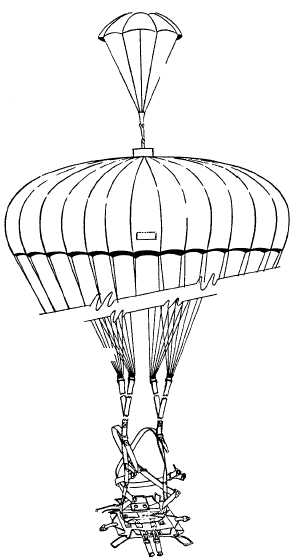ANTIEXPOSURE COVERALL
Antiexposure coveralls are composed of several
garments that protect you against exposure in cold
water. The two main coveralls are the constant-wear
and the quick-donning. The constant-wear suit consists
of a waterproof outer garment worn over a ventilation
liner and/or cold weather underwear. Constant-wear
coveralls provide additional protection from cold
temperatures.
The quick-donning antiexposure coverall is carried
in the aircraft and donned only in case of emergency. It
consists of a waterproof outer garment equipped with
permanently attached boots and wrist and neck seals.
An inflatable hood and antiexposure mittens are stowed
in the pockets. In case of emergency, the coverall is
donned over the regular flight clothing (fig. 11-5).
Either the continuous-wear or quick-donning
antiexposure coverall is provided for flight personnel
and passengers when there is a significant risk of
crashing in the water, and when any of the following
conditions exist:
1.
The water temperature is 50°F or below.
2.
The outside air temperature (OAT) is 32°F
(wind chill factor corrected) or below.
If the water temperature is between 50° and 60°F,
the commanding officer of the unit concerned considers
the following search and rescue (SAR) factors to
determine if antiexposure coveralls should be worn:
1.
The maximum probable rescue time. This
should be a function of mission distance, SAR
equipment, and SAR location.
2.
The lowest temperatures that will occur in the
mission area during the time period of the flight.
When water temperature is below 60°F and
antiexposure coveralls are not required, the flight
equipment must include antiexposure and high-
11-4
SILVER
REFLECTIVE
TAPE
RED-ORANGE
REFLECTIVE
TAPE
ANKLE CINCH
MITTEN/GLOVE
ASSEMBLY
WAIST
CINCH
REFLECTIVE
TAPE
FACE
FLAP
HELICOPTER
HOIST
STRAP
WRIST
CINCH
ANf1105
Figure 11-5.—Quick-donning antiexposure coverall.
HARNESS
PACK
SUSPENSION
LINES
CANOPY
PILOT CHUTE
ANf1106
Figure 11-6.—Five major components of a Navy parachute.



